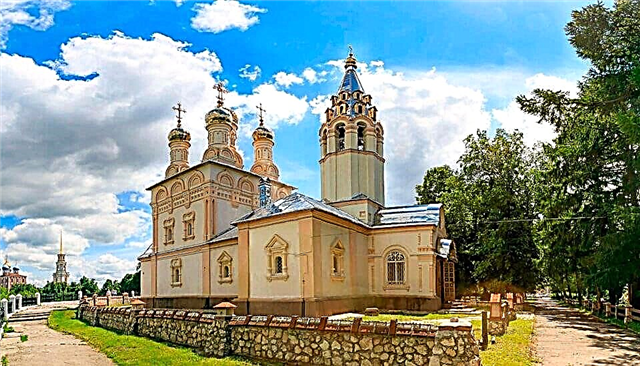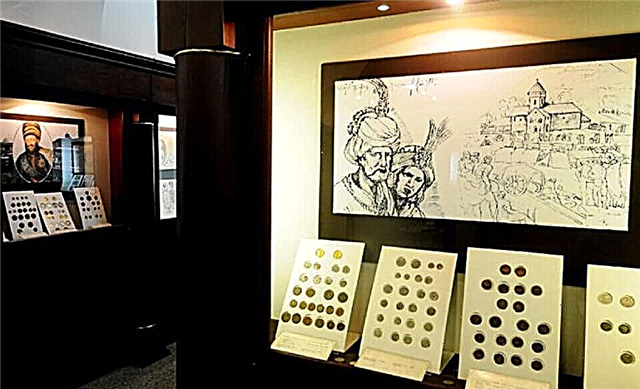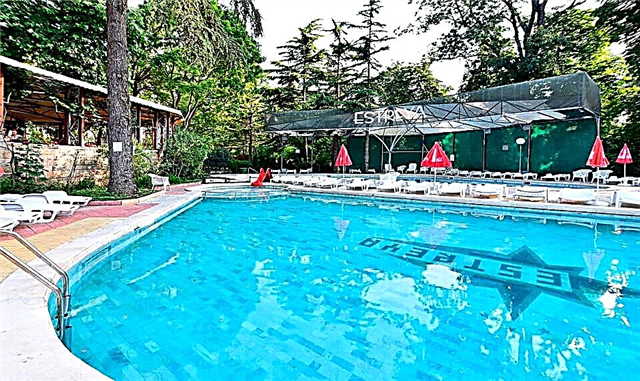Address: Republic of Belarus, Brest
Start of construction: 1833 year
Completion of construction: 1915 year
Main attractions: sculptural composition "Thirst", the main monument, bayonet-obelisk, St. Nicholas garrison temple, Kholmsky gate, a monument to the heroes of the border
Coordinates: 52 ° 04'57.5 "N 23 ° 39'21.7" E
Content:
Short description
Ancient Brest was founded in the 11th century on a cape formed by the Western Bug and Mukhavets rivers. "The Tale of Bygone Years" calls this settlement Berestye, mentioning it in connection with the struggle of Svyatopolk Vladimirovich and Yaroslav the Wise for the Grand Duke's throne.

The main entrance to the fortress
Occupying a strategic position at the intersection of two trade routes, Berestye has become a major trade center. One of the routes led along the Western Bug to Poland, the Baltic States and Western Europe; and the second - along the rivers Mukhovets, Pripyat and Dnieper, connected the city with the Black Sea region and the Middle East.
Border Brest became an object of struggle between the powers. For 800 years of its history, the city was under the rule of the Turov principality, the Grand Duchy of Lithuania and Poland, and only in 1795, as a result of the third partition of the Polish-Lithuanian Commonwealth, was it annexed to Russia.

Ceremonial Square, Main Monument, Bayonet Obelisk
During the war with Napoleon, Russian troops recaptured Brest captured by the French and dealt a heavy blow to the enemy's cavalry units. Having celebrated the victory, the tsarist government decided to build a powerful citadel in Brest. Like Bobruisk, medieval Brest was demolished, and on the site of the ancient settlement for 6 years - from 1836 to 1842 - a modern outpost was built... The fire of 1835, which destroyed 300 buildings, accelerated the clearing of the area.

Main monument
The fire victims received monetary compensation, loans with money and timber and rebuilt a new city 2 km east of the fortress. On April 26, 1842, the Brest Fortress replenished the system of first-class citadels guarding the western borders of the Russian Empire.
The device of the Brest Fortress in the 19th century
The main fortification of the citadel, standing on an island between the Bug and Mukhavets rivers, consisted of two two-storey barracks with walls about 2 meters thick.

Sculptural composition "Thirst"
The 500 casemates could accommodate 12,000 soldiers with the necessary weapons, ammunition and provisions. Through the embrasures cut in the niches of the walls, the enemy was fired upon from cannons and rifles. Four protruding semicircular towers covered the main citadel from fire and allowed flanking fire from throwing guns. A system of drawbridges connected the main fortification with three artificial islands formed by Mukhavets and moats.

Monument to the heroes of the border
There were bastion forts with ravelins on the islands. Outside, the Brest Fortress was surrounded by a 10-meter earthen rampart, in the thickness of which there were stone casemates. From the ring barracks, the citadel could be accessed through four gates; to date, three of them have survived - Kholmsky, Terespolsky and Northern.
Temples were rebuilt for the needs of the garrison. Thus, the Basilian monastery, later known as the White Palace, was used for officers' meetings. In 1864 - 1888, engineer-general E. I. Totleben strengthened the fortress with a ring of 9 forts, each of which could house a garrison of 250 people and 20 guns.

Kholmsk gate
Brest Fortress in the First World War
Since 1913, intensive work has been carried out to prepare the fortress for defense with the involvement of peasants from the surrounding villages and artels who come from the Kaluga and Ryazan provinces. By 1915, the construction of 14 forts, 5 defensive barracks and 21 defensive points was completed. The Brest fortifications were well prepared, but on the very eve of the war, General Gurko's military reform broke out, during which all infantry divisions were disbanded. By the beginning of the First World War, the citadel did not have an efficient garrison (it consisted only of militias), so the high command decided to evacuate.

Ruins of the White Palace
Retreating, the Russian army partially burned the most modern forts. And three years later, the Brest Fortress became famous throughout Europe - it was here, within the walls of the White Palace, that the Brest Peace Treaty was signed.
Brest Hero Fortress - a symbol of patriotism and courage
On June 22, 1941, at 4 o'clock in the morning, suddenly and without declaring war, Germany attacked Soviet Russia. At 4:15 am, the Nazi invaders opened artillery fire on the border Brest Fortress, while the Red Army men were still asleep.

Terespolskie gates
Barracks, warehouses began to collapse, the water supply system went out of order, communication was interrupted. The garrison, taken by surprise, was split into separate pockets and was cut off from the main forces of the Red Army. The Germans surrounded the fortress in a dense ring and bombarded it with heavy shells. 3500 Russian fighters, in conditions of an acute shortage of ammunition, provisions and water, held back the enemy's onslaught for more than a month. May 8, 1965 for the heroic defense of the citadel in Brest was awarded the title of hero-fortress.

View of the barracks from the Terespolskie gates
In 1971 a memorial complex "Brest Fortress-Hero" was erected in memory of the heroic deed of the Red Army. In the center of the complex there is a huge sculpture "Courage" depicting a warrior's head and a banner. The memorial also includes the Ceremonial Square, tombstones over the graves of heroes, the ruins of the citadel, the "Thirst" sculpture and the bayonet obelisk. "Thirst", made in the form of a soldier crawling towards the water, recalls how many soldiers died trying to get precious drops. The enemy knew about the lack of water and fired at the approaches to the river.

The ruins of the citadel defense headquarters
The Eternal Flame is burning near the Main Monument. Perhaps the best words about the heroic deed of the defenders belong to the writer B. Vasiliev: "The Brest fortress did not fall: it simply bled out." The Germans hoped to take the fortress in 8 hours, and conquer the entire Soviet Union in 6 weeks, but the Brest defenders thwarted all Hitler's plans for a blitzkrieg.











